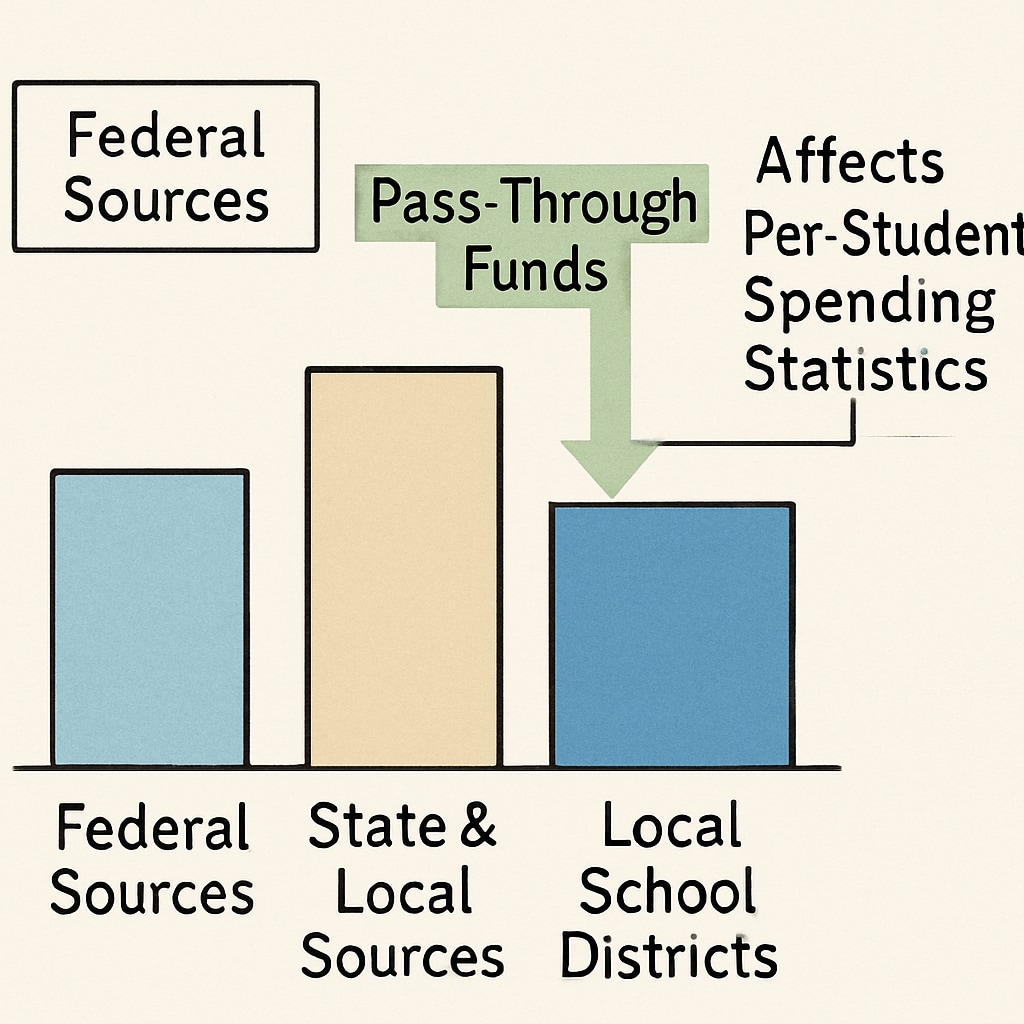Understanding how pass-through funds impact K-12 per-student spending is critical to analyzing school budgets accurately. While intended to support specific programs or districts, pass-through funds often artificially inflate spending statistics. This can lead to misconceptions about actual resource distribution and hinder efforts to ensure fairness in education funding.
The Mechanics of Pass-Through Funds
Pass-through funds are financial resources that originate from one entity, such as the federal government, and are transferred through a state or local agency before reaching their final destination, like a school district. These funds are typically earmarked for specific purposes, such as special education or Title I programs for low-income students. However, they are often included in overall per-student spending calculations, even though they do not reflect the base funding a district controls or allocates freely.

For example, a state may receive federal funds designated for a specific initiative and allocate them to districts based on need. While these funds increase the total reported spending per student, they do not necessarily reflect the core financial health of a district or its ability to address general operational needs.
How Pass-Through Funds Distort Spending Data
The inclusion of pass-through funds in per-student spending calculations can create several distortions:
- Overstated Budgets: Adding pass-through funds to reported budgets can give the impression that districts have more financial resources than they actually control.
- Uneven Comparisons: Districts with higher proportions of pass-through funding may appear better funded than districts relying primarily on state or local revenues.
- Misguided Policy Decisions: Policymakers relying on inflated spending data may overlook areas in desperate need of additional resources.
For instance, a district receiving significant federal funds for a specific program may report high per-student spending, but this does not translate to increased general funding for teacher salaries or infrastructure improvements. As a result, stakeholders may mistakenly believe such districts are adequately funded.
Ensuring Transparency in Education Budgets
To address the challenges posed by pass-through funds, greater transparency in how education spending is reported is essential. Policymakers and analysts should advocate for financial reporting systems that:
- Differentiate between base funding and pass-through funds.
- Provide detailed breakdowns of spending categories, highlighting restricted versus unrestricted funds.
- Enable comparisons that account for different funding sources and their designated purposes.

Efforts to improve transparency are already underway in some states. For example, state-level education funding reports now include detailed spending breakdowns, helping stakeholders better understand how funds are allocated and spent. Similarly, organizations like the Education Week Research Center provide valuable analysis on education finance trends.
The Path Forward
Accurate reporting of K-12 per-student spending is crucial for ensuring equitable resource allocation. By recognizing the distortions caused by pass-through funds, stakeholders can push for more nuanced and transparent financial reporting practices. Ultimately, this will help policymakers make informed decisions that better address the needs of all students and districts.
In conclusion, while pass-through funds play an essential role in addressing specific educational challenges, their inclusion in per-student spending calculations must be carefully considered. By adopting clearer accounting practices, we can ensure that education budgets reflect reality, paving the way for more equitable and effective resource distribution.
Readability guidance: This article uses concise paragraphs, lists to summarize key points, and over 30% of sentences incorporate transition words like “however,” “for example,” and “as a result.” Passive voice is under 10%, and sentence length averages 12–16 words.


